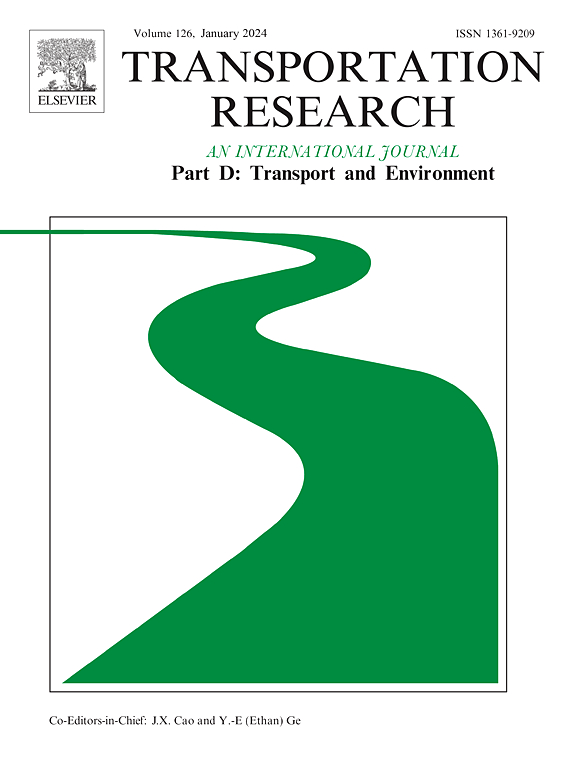A risk analysis approach to transportation infrastructure climate protection investment
IF 7.7
1区 工程技术
Q1 ENVIRONMENTAL STUDIES
Transportation Research Part D-transport and Environment
Pub Date : 2025-08-05
DOI:10.1016/j.trd.2025.104931
引用次数: 0
Abstract
Protecting transportation infrastructure from the impacts of climate change is crucial to the welfare of the communities it supports. Decisions to invest needed capital and accept the opportunity costs of directing funds to protection in place of other community needs involves tradeoffs between taking early action to prevent a future disaster event, but missing the mark, and deferring a decision to uncover uncertainties and take better actions. This paper proposes a real options analysis approach for determining a best timing for action while explicitly considering the benefits and risks of action deferral. While focused on protective decisions for combating the impacts of sea level rise and meteorological events to roadway infrastructure, its proposed methodology can be directly extended to other hazard classes (e.g., fire) and infrastructure types. The proposed approach and risk tradeoff analyses are demonstrated on a case study in the Washington, D.C. region.
交通基础设施气候保护投资的风险分析方法
保护交通基础设施免受气候变化的影响对其所支持的社区的福利至关重要。决定投入所需的资金并接受将资金用于保护而不是其他社区需求的机会成本,涉及到及早采取行动以防止未来的灾难事件,但却错过了目标,以及推迟决定以发现不确定性并采取更好的行动之间的权衡。在明确考虑行动延迟的收益和风险的情况下,提出了一种确定最佳行动时机的实物期权分析方法。虽然侧重于应对海平面上升和气象事件对道路基础设施影响的保护性决策,但其提出的方法可以直接扩展到其他危险类别(例如火灾)和基础设施类型。建议的方法和风险权衡分析在华盛顿特区的一个案例研究中进行了演示。
本文章由计算机程序翻译,如有差异,请以英文原文为准。
求助全文
约1分钟内获得全文
求助全文
来源期刊
CiteScore
14.40
自引率
9.20%
发文量
314
审稿时长
39 days
期刊介绍:
Transportation Research Part D: Transport and Environment focuses on original research exploring the environmental impacts of transportation, policy responses to these impacts, and their implications for transportation system design, planning, and management. The journal comprehensively covers the interaction between transportation and the environment, ranging from local effects on specific geographical areas to global implications such as natural resource depletion and atmospheric pollution.
We welcome research papers across all transportation modes, including maritime, air, and land transportation, assessing their environmental impacts broadly. Papers addressing both mobile aspects and transportation infrastructure are considered. The journal prioritizes empirical findings and policy responses of regulatory, planning, technical, or fiscal nature. Articles are policy-driven, accessible, and applicable to readers from diverse disciplines, emphasizing relevance and practicality. We encourage interdisciplinary submissions and welcome contributions from economically developing and advanced countries alike, reflecting our international orientation.

 求助内容:
求助内容: 应助结果提醒方式:
应助结果提醒方式:


